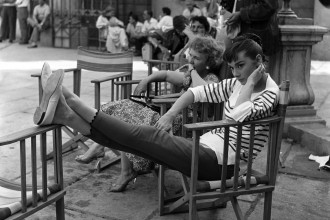National String Instrument Corp.
National Style O (1930)A resonator guitar is an acoustic guitar that carries string vibration through the bridge to one or more spun metal cones (resonators), instead of to the sound board. Founded in 1927 by John Dopyera and George Beauchamp, the National String Instrument Corporation was a guitar company that manufactured the first resonator guitar, the tri-cone. In 1928 Dopyera left National, and with his brothers he formed the Dobro Manufacturing Company to produce a single-cone resonator that was cheaper to produce and louder than the tri-cone. National soon introduced their own single resonator design, the Style O.
Introduced in 1930, the Style O was the endpoint of several years of rapid evolution of the resonator guitar. The looks were awesome and it had a sound all its own. The model’s greatest exposure came in 1985, when Dire Straits released Brothers in Arms, featuring on the cover nothing but a National Style O floating in the sky . The 14-fret version of the Style O is now famous as the ‘Dire Straits model’. The National Style O still has an iconic appeal. For purists, it’s not as elegant as a tri-cone, but it has the ultimate combination of tone, volume, versatility and aesthetics. Originals can only be found at vintage dealers, who unfortunately put a big premium on it.
Company timeline: In 1932 Dobro secured a controlling interest in National and took over the company. In 1994 Dobro was taken over by Gibson. In 1989 a new company named National Reso-Phonic Guitars began manufacturing reproductions of resonator instruments based on designs originated by John Dopyera.
Care has been taken to trace the ownership of any copyright material and to contact the owner. The author does not intend to infringe on anyone’s copyright for text, photos or otherwise. Anyone who feels that any item in these pages may have inadvertently breeched their copyright should advise the author via the contact sheet, including a link to the page, so that appropriate remedial action can be taken.







